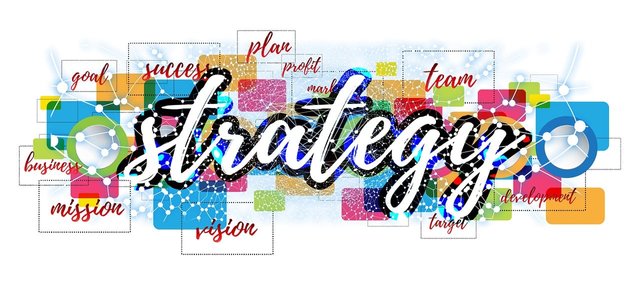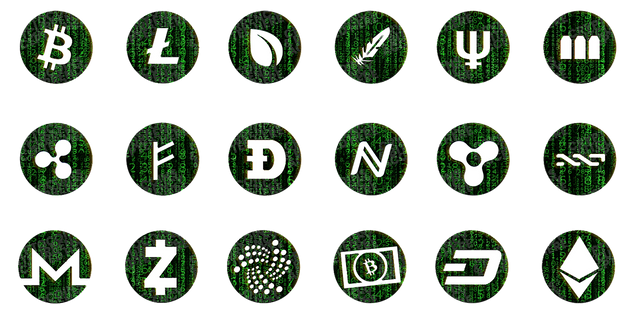AssalamuAlaikum & Greetings Everyone!
AssalamuAlaikum & Greetings Everyone!
It's me @amjadsharif
From #pakistan
From #pakistan
 Canva Design Made by @amjadsharif
Canva Design Made by @amjadsharif| Q-1: Understanding Liquid Staking |
|---|
 Edit with Canva by @amjadsharif
Edit with Canva by @amjadsharifThe innovative financial mechanism which is liquid staking enables crypto investors to have improved flexibility through traditional locking restrictions. Users who stake their cryptocurrencies on a network in traditional methods must lock their funds for a certain period since they are not allowed to access them during that time. The concept of liquid staking enables users to obtain an easily transferable token that stands for their staked cryptocurrency to facilitate decentralize finance transactions and additional investments.
The operation of liquid staking functions through three steps.
Users can stake their crypto through pooled systems managed by Lido, Rocket Pool, and Frax. With deposited funds users obtain a representative token which they can use for further investments or in DeFi applications.
Users who stake Ethereum via Lido Protocol receive ETH as their liquid token stake.
Users can obtain ETH tokens from staked ETH within Rocket Pool systems.
If you stake your Frax with Frax then you receive the representative token called FRAX.
The staking tokens serve two functions, they demonstrate deed ownership of the deposited cryptocurrency and can function in trading markets or financial services operations.
Advantages of Liquid Staking:
- Users maintain effective financial flexibility by virtue of their capital being available for other business ventures since funds remain uncompromised in traditional staking methods.
- Stakers who possess liquid staking tokens gain access to DeFi platforms which offer the chance to acquire supplementary benefits from their assets.
- The staking operation provided by Rocket Pool allows users to become node operators while also maintaining complete decentralization of the process.
Risks of Liquid Staking:
- Users who use liquid staking platforms face investment risks because smart contracts deployed by these platforms may contain dangerous vulnerabilities.
- Financial losses happen when liquid staking token prices vary from the underlying staked asset’s value because they are linked to it.
- Prolonged platform control over elevated staked funds quantities leaves uncertainty about how it affects network decentralization structures.
| Q- 2: Opportunities in Real-World Asset Tokenization |
|---|

Image by Sinisa Maric from Pixabay
Real-world asset (RWA) tokenization represents a transformation within decentralized finance (DeFi) by allowing the connection between blockchain technology and conventional financial systems. The process of converting real estate and commodities and financial instruments into digital tokens through RWA tokenization delivers enhanced DeFi liquidity and better accessibility together with increased transparency.
Through RWA Tokenization DeFi is undergoing transformative change.
Doctors have historically faced extensive barriers to trading or transferring real-world property assets due to their low market liquidity. The tokenization process enables investors to split ownership of valuable assets so that they can buy and sell portions of those assets. The innovation makes investment opportunities available for increased participation including investors who exceed institutional frameworks. The utilization of tokenized assets within DeFi allows users to use these assets as collateral thus creating new borrowing opportunities that boost capital utilization.
Examples of Platforms Enabling RWA Tokenization
Several blockchain initiatives are currently driving the process of turning physical assets into digital tokens.
- Goldfinch introduces blockchain integration to real-world credit assets which enables marketplace access to borrowing opportunities in emerging economies.
- Through its Centrifuge platform businesses can convert their real estate and invoices together with various other assets into tokens which make them accessible for decentralized finance borrowing without requiring conventional banks.
- The Ondo Finance platform links U.S. Treasury bonds through DeFi for stable financial returns.
- The Maple Finance platform helps institutions loan money through tokenizing different types of credits and fixed-income financial products.
Potential Benefits
Through the tokenization process businesses gain improved market efficiency because their assets can be traded twenty-four hours per day.
Blockchain technology provides transparent security features which enable users to verify asset ownership records.
Retail investors now have the opportunity through fractional ownership to access expensive assets that were previously unavailable to them.
Challenges and Risks
Regulatory compliance operates differently from one jurisdiction to another which produces regulatory uncertainty.
The process of establishing reasonable prices along with determining market value for assets through tokenization faces difficulties.
The safety of smart contracts remains uncertain which implies vulnerable financial situations for investors might occur.
RWA tokenization evolves toward changing DeFi through its ability to bring blockchain-based banking solutions to traditional financial assets while enhancing accessibility and operational efficiency.
| Q- 3: Practical Applications of Liquid Staking in DeFi |
|---|
The DeFi ecosystem gained a tremendous benefit from liquid staking which provides users control of their assets combined with liquidity functionality through tokens such as stETH (Lido Staked ETH) and rETH (Rocket Pool ETH). Staked assets get represented through liquid-staked tokens which users can utilize across multiple DeFi protocols to find the best yield options.
Example Strategy: Leveraging Liquid Staked Tokens in Yield Farming
Users can boost yield farming returns through the application of stETH within a lending and borrowing system loop. Here's how it works:
Users can obtain stETH from Lido after they stake their ETH through this protocol. During its earning of staking rewards the user maintains access to DeFi applications using stETH while ETH remains staked in a protocol.
Users can deposit stETH assets into Aave or Compound to secure borrowing power by using the stETH tokens as collateral.
Users who stake their borrowed ETH once more can obtain more stETH and thus build greater exposure to earn enhanced staking rewards.
The user can participate in stETH/ETH yield farming by adding liquidity to exchanging platforms like Curve and Balancer which generate trading fees and liquidity rewards.
Benefits of This Strategy
The union of staking rewards with borrowing alongside yield farming provides users with the ability to boost their overall yield.
The strategy enables users to keep earning staking rewards through their staked assets which they can simultaneously deploy in DeFi protocols.
StETH and ETH have similar price relationship which reduces liquidation threat relative to pairs that exhibit more volatility.
Potential Risks
Smart Contract Risks rise when multiple protocols are utilized because they increase the likelihood of smart contract failures or exploits.
The deviation of the stETH/ETH peg causes collateral value to decrease which results in mandatory forced liquidations.
The Staking platform has a vulnerability system which imposes penalties on validators but occasionally triggers reductions in their earnings.
Healthy trading cannot happen immediately because lending or DEX pools' available liquidity could be insufficient.
Liquid staking presents itself as a significant DeFi yield farming instrument when properly managed risks alongside strategy diversification.
| Q-4: Build a DeFi Strategy with Liquid Staking and RWAs |
|---|

Image by Gerd Altmann from Pixabay
The strategy uses integrated liquid staking operations together with Real-World Asset (RWA) tokenization methods to achieve maximal asset returns alongside adequate risk prevention. By using liquid staking users gain the advantage of continuous rewards and they can store their assets in a liquid form. Also RWAs support stability and provide real-world monetary values.
Staking for Yield and Liquidity
The liquid staking network Lido or Rocket Pool allows investors to deposit ETH for stETH receipt which acts as a liquid staking token (LST). DeFi participants can use the represented staked assets through these tokens instead of performing an unstaking process.
Benefits:
Users obtain staking rewards and maintain full liquidity through this approach.
LSTs enable investors to generate more money by using them to lend out or participate in farming and borrowing activities.
Diversifying with RWAs
Tokenized RWAs consisting of government bonds and real estate and commodities structure a part of the portfolio. The assets deliver a constant stream of returns as well as minimizing exposure to crypto market fluctuations.
Example Allocations:
The portfolio contains tokenized bonds which offer stable and predictable low-risk returns.
Two strategies for maximizing income exist through fractionalized real estate holdings and other cash-flow-oriented properties.
Enhancing Yield with DeFi
LSTs and RWA tokens function as supplying assets and collateral for borrowing stablecoins when connected with DeFi lending protocols such as Aave and Maker. Investors can use borrowed money to acquire RWAs that generate returns after which the compounding effect takes place.
Yield Boosting Strategies:
The combination of LSTs with RWA investment enables stablecoin borrowing which generates additional investment capital for RWA acquisition.
Investors who have RWA-backed DeFi pools can increase their yield by making liquidity contributions to obtain extra yield.
This investment approach combines risk control strategies with market adjustments by supplying DeFi lending protocols through assets like Aave or Maker to earn interest or borrow stablecoins which can afterward be reinvested into yield-producing RWAs.
croll back ensures financial stability despite LSTs continuing their reward-generation process.
The bull market allows investors to reallocating funds from RWA holdings into novel crypto assets to maximize returns.
The secondary market for LSTs enables users to access liquidity without affecting unwanted unstaking procedures.
Such a combined approach of liquid staking and RWAs allows users to achieve optimal yield enhancement while maintaining liquidity control alongside risk reduction adaptability across various market situations.
| Q-5: Lessons from Real-Life DeFi Innovations |
|---|
The Role of Liquid Staking in a Trader’s Success

Image by Mohamed Hassan from Pixabay
Bilal Bilal presented himself as a DeFi investor who faced challenges because of capital inefficiencies. The large amount of Ethereum (ETH) Bilal staked became inaccessible because staking earned him yields yet restricted his capability to trade. Liquid staking protocols known as Lido and Rocket Pool presented an opportunity for Bilal to stake his ETH while receiving stETH as an exchange.
Through the use of stETH Bilal gained the ability to participate in DeFi activities including lending options, yield farming and secured borrowing operations. The lending protocol enabled Bilal to swap his stETH portfolio for stablecoins which he used to obtain higher returns in risky investment opportunities. His stake rewards combined with leveraged trading activities created substantial financial growth through time. During an unexpected ETH market downturn his loan collateral became insufficient which created a possibility of getting his positions liquidated. As a result of his experience Bilal adopted a modified risk management plan by using small leveraged amounts and holding various assets.
The Impact of RWA Integration on an Investor’s Failure
The trader Ayesha showed great interest in how Real-World Asset (RWA) tokens operated. She participated in a decentralized finance platform which tokenized real estate together with government bonds and she expected stable returns through this investment. Sudden restrictions occurred due to the inadequate regulatory clarity of the platform. The governmental action led to asset restrictions which made Ayesha's money unable to be used. The smart contract displayed weaknesses which enabled cybercriminals to extract massive financial losses.
The incident revealed the dangers of investing through unregulated RWA platform services. Potential investors need to evaluate platform trustworthiness along with existing legal guidelines and they should split their investments between DeFi protocols and conventional financial products.
Key Takeaways for Future Investors
- The advantage of capital efficiency through liquid staking requires investors to use managed leverage carefully in order to prevent losses from liquidations.
- Due to the need for thorough legal risk assessment participants should be aware of the regulatory aspects associated with RWA integration.
- To manage unexpected risks investors need to combine their assets between conventional investment products and DeFi assets.
People who study these lessons will gain better tools to approach DeFi innovations through strategic decisions.
I invite @animal-shelter, @sshabbir86, and @rauja to take part in this contest.


Downvoting a post can decrease pending rewards and make it less visible. Common reasons:
Submit
Thank you @abdullahw2
Downvoting a post can decrease pending rewards and make it less visible. Common reasons:
Submit